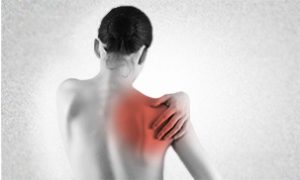Individualized Treatment Plans
Everyone is unique and so is your injury. That is why your physical therapist will evaluate your injury or condition on your first visit and will develop a plan specifically tailored to your needs. We will work together with you to meet your rehabilitation goals.
Our mission is to provide you the most effective and highest quality physical therapy treatment. No matter the type of pain you are experiencing, our goal is to reduce or eliminate your discomfort and enhance your overall physical function. We treat conditions related to sports injuries, orthopedic injuries or surgeries, trauma, and repetitive stress injuries.
We Treat The Following Conditions
- Sports-Related Injuries
- Pre/Post-Orthopedic Surgery (ie., ACL Tear, Rotator Cuff Tear, Joint Replacement)
- Muscle Strains (i.e., Rotator Cuff Strain, Hamstring Strain, Back Strain)
- Ligament Sprains (i.e., Ankle Sprain, Knee Sprain)
- Tendonitis (i.e., Tennis Elbow, Golfer’s Elbow, Achilles Tendonitis, Patella Tendonitis)
- Overuse Injuries (i.e., Ilial Tibial Band Syndrome, Plantar Fasciitis)
- Joint Pain Related to Arthritis
- Back Pain (i.e., Sciatica, Bulging Disc, Stenosis)
- Neck Pain/Whiplash
- Work-Related Injuries
Specialty services we provide
- Performance training
- Injury Prevention Programs
- Dry Needling
- Instrument assisted soft tissue mobilization
- Cryo-tank
- Kinesiotape
- Posture & Gait Analysis




Dry Needling
A technique physical therapists use to treat myofascial pain. The technique uses a “dry” needle, one without medication or injection, inserted through the skin into areas of the muscle, known as trigger points
What is a Trigger Point?
A trigger point is a taut band of skeletal muscle located within a larger muscle group. Trigger points can be tender to the touch, and touching a trigger point may cause pain to other parts of the body.
What Kind of Needles are Used?
Dry needling involves a thin filiform needle that penetrates the skin and stimulates underlying myofascial trigger points and muscular and connective tissues. The needle allows a physical therapist to target tissues that are not manually palpable.
Why Dry Needling?
Physical therapists use dry needling with the goal of releasing or inactivating trigger points to relieve pain, improve range of motion, and improve function. Research supports that dry needling improves pain control, reduces muscle tension, and normalizes dysfunctions of the motor end plates, the sites at which nerve impulses are transmitted to muscles. This can help speed up the patient’s return to normal muscular function.
Instrument-Assisted Soft Tissue Mobilization (IA STM)
A therapeutic technique that uses specific instruments to promote mobilization of restricted tissue. Restricted myofascial tissue or scar tissue are the primary tissues addressed with its application. Instruments effectively break down fascial restrictions and scar tissue. The ergonomic design of these instruments provides the clinician with the ability to locate restrictions and allows the clinician to treat the affected area with the appropriate amount of pressure.

